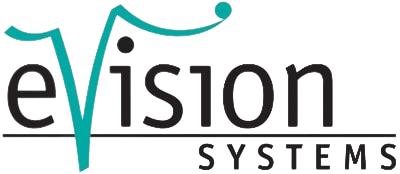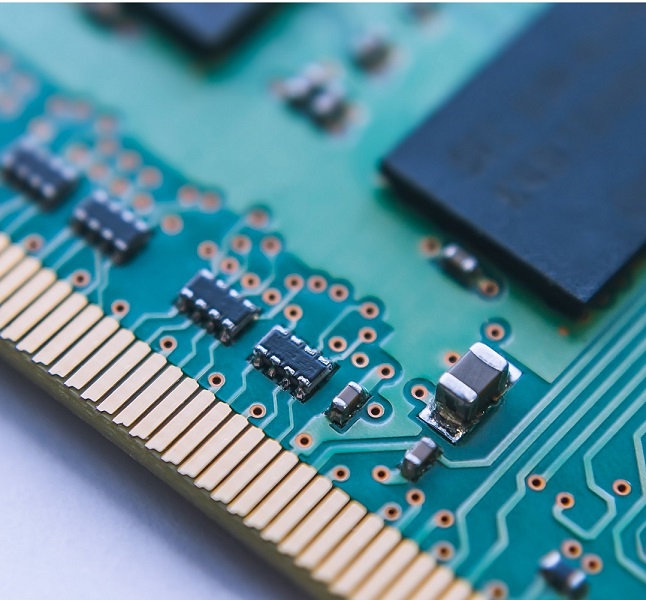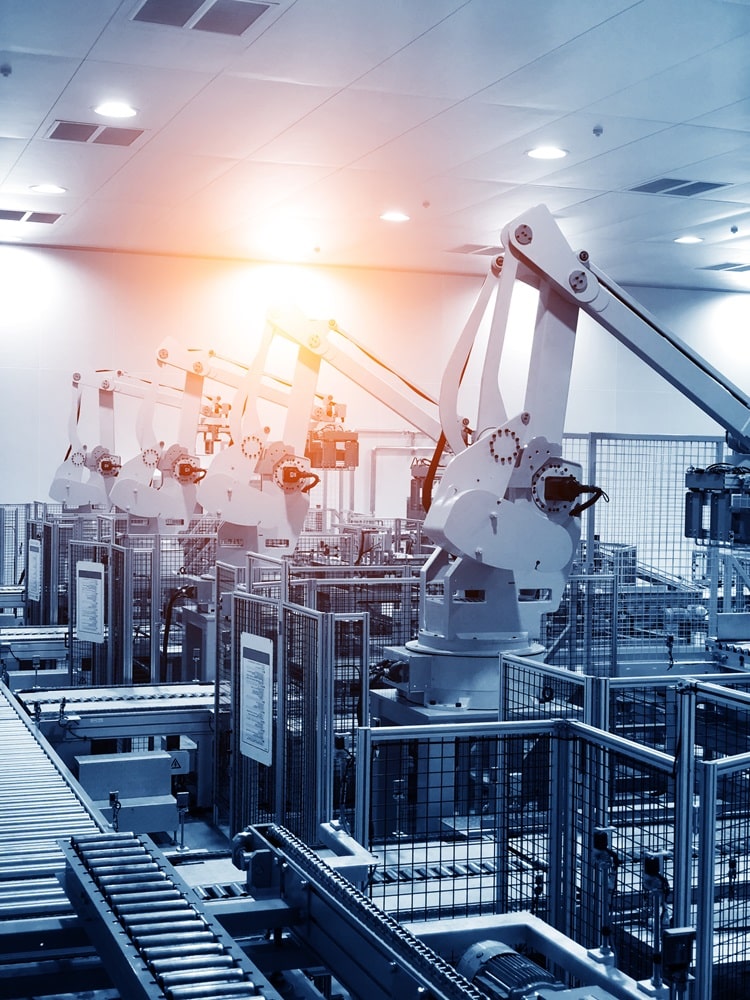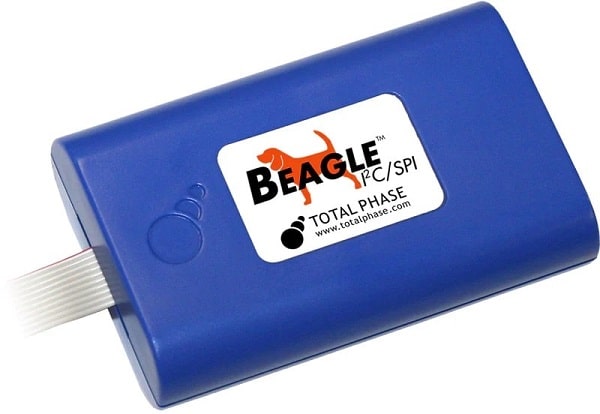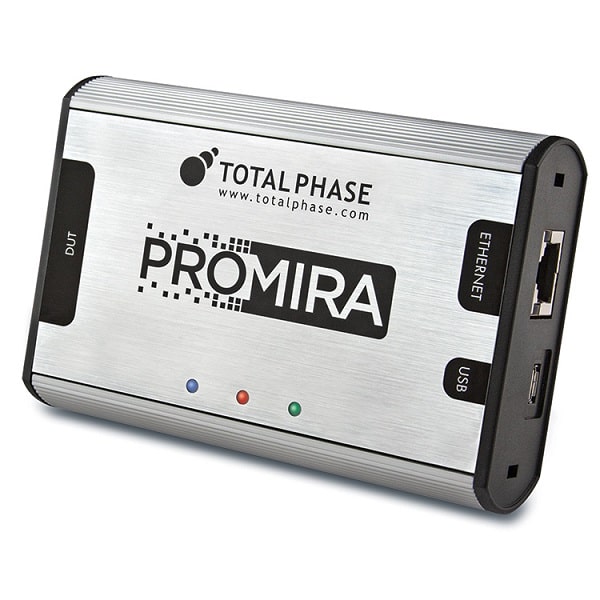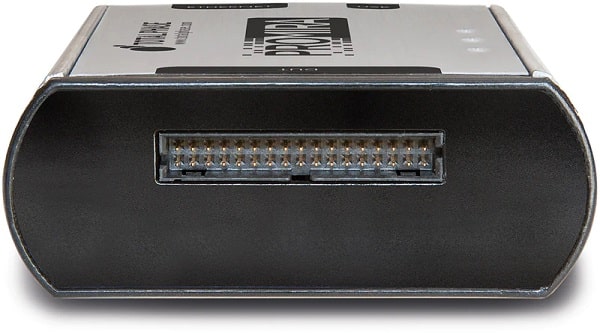
I2C vs SPI Protocol: Differences and Similarities

About the I2C
I2C (Inter-Integrated Circuit) is an on-board communication protocol, which is ideal for short distances and low bandwidth. It has a master-slave architecture in which all slaves are connected to the master via two wires: the serial data wire (SDA) and the serial clock wire (SCL). I2C is typically used for attaching lower-speed peripherals such as sensors to processors and microcontrollers over short distances within an integrated circuit.
The I2C protocol defines how to send data. Initially, the master issues a start condition followed by the address of the slave device to which it is communicating. Once the appropriate slave has identified its address, it looks for the proceeding read/write flag issued by the master. This flag tells the slave whether it can expect to receive data or send data. Once the slave has acknowledged the master, communication then proceeds.
One feature of I2C is the built-in check system: every byte of data is acknowledged by the receiver with either an ACK or NAK to signal to the transmitter the data has or has not been received. Once the master has finished communicating with the addressed slave, it will issue a stop condition to signal the end of transmission. After the stop condition, communication with other slave devices can begin.
About the SPI
The Serial Peripheral Interface (SPI) is another serial communication protocol that is heavily used in embedded systems. Like I2C, it is also has a master-slave architecture but it is a 4+ wire bus. SPI requires a clock line (SCK), two data lines for transmitting data bidirectionally known as the MOSI and MISO lines. Additionally, there must be a slave select (SS) line for each slave on the bus. Instead of utilizing an addressing system like I2C, multiple slaves are controlled by the master via the slave select lines. This is a very simple protocol with almost no overhead, making it ideal for streaming applications - data can be shifted at very high rates as the full duplex characteristic makes SPI a very efficient protocol.
If you need to monitor the data communication of these protocols you will require a protocol analyzer. Protocol analyzers capture and report the communication across a bus for the purpose of allowing users to analyzer and debug data traffic. Let’s have a look at similarities and differences between properties of I2C and SPI protocol analyzers.
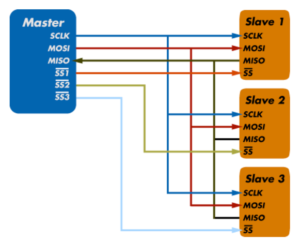
I2C vs SPI Protocol: Differences and Similarities
A significant difference is that the I2C is slower (typically 100-400 KHz, maximum 5 MHz) compared to SPI, which can reach up to 80 MHz or sometimes even higher speed. The availability of higher SPI speed is due to the use of multiple lines for data transfer and low protocol overhead.
| Features | Description | I2C protocol | SPI protocol |
|---|---|---|---|
| Lines | Lines Required That sthe communication protocol is working | 2 | 4 |
Speed |
Maximum speed | 100KHz (default) 400 KHz (fast mode) 1MHz (Fast Mode Plus) 3.4 MHz (high-speed mode) 5 MHz (ultra fast mode) | 80MHz (default)
100 MHz (fast mode) |
| Required Power | Compares the required services for the respective protocol | Uses more power as SPI | Better suited for Low power applications |
Price and costs
| Implementation costs for similar projects | 2C is cheaper to implement because no chip select or arbitration logic is required | Implementing the SPI protocol is more expensive as it requires more on-chip real estate |
Clock stretching | Clock stretching is a feature that allows slave devices to change the main bus clock on demand. | If a slave device cannot process data fast enough, it can slow down the clock with a stretched clock to slow down the bit rate and help sustain it. | Slave devices in the SPI protocol do not use clock stretching. |
Noise Immunity | Noise immunity describes how well a device or system can function in the presence of noise. | Less prone to noise. | More prone to noise |
Configurations | What configurations of master and slave devices does the protocol support? | Multi-master protocol, allows any number of master and one or more slave devices | The single master protocol must use a master device and either one or more slave devices |
Data Verification | Can the log detect errors? Does it verify receipt of data by slave devices after the master device communicates? | Uses the acknowledgment bit after each byte and ensures that data sent is received by the slave device | No standardized way to check if data was received correctly or not, does not support acknowledgment bit |
Message size | What message size does the protocol support | I2C communication uses messages divided into frames. A 7- or 10-bit frame carries the message, and the data is transmitted in 8-bit frames separated by acknowledgment bits that verify receipt of the data. | SPI communication works via shift registers. Messages can be 8-bit, but 12- or 16-bit data transfers are also possible. |
Duplex | Does the protocol allow bi-directional, simultaneous communication between devices? | Half-duplex mode - Single cable can carry data in both directions, but not at the same time | Full duplex mode - single cable can transmit data in both directions at the same time |
SPI/I2C protocol analyzers and Host Adapter
Now that we have a clear understanding of the differences and similarities between the two protocols, let’s discuss the analyzers.
There are several protocol analyzers on the market. Some are specific to one protocol while other analyzers support multiple protocols.
There are few functional differences between most of the I2C and SPI analyzers. They might have implementation differences such as header types, pin counts, or voltage/current tolerances, but those differences are from the manufacturers' designs.
Most analyzers provide a GUI software to read the communication captured on the bus. Protocol analyzers typically decipher protocol control signals and data, as opposed to a standard logic analyzer that only displays signals and timing diagrams.
Not all software is created equal. The ability to view data in real time, start and stop captures, save and share captures and search and filter captures are not always available in all protocol analyzer software. For additional flexibility and use, some protocol analyzers come with a software API allowing the user to created a customized tool for their specific needs.
There are a few protocol analyzers on the market that support multiple protocols, but again - not all are created equally. These analyzers can range widely in price and functionality. The I2C/SPI Protocol Analyzer monitors I2C and SPI protocols, as well as MDIO. It is compact, relatively inexpensive and the accompanying software offers real-time data capture and display and fully supports Window, Linux, and Mac OS X.
If you are looking for increased performance, additional protocol support and a build-it-as-you-need-it device, consider the Promira Serial Platform. The Promira platform is an I2C, SPI host adapter as well as an eSPI protocol analyzer, all in one. Protocol analyzer functionality for I2C and SPI will be added to the platform in the near future. The platform model allows customers to purchase only the applications they need, as they need them. It comes with a slightly higher ticket price than the Beagle I2C/SPI Protocol Analyzer - it also comes with a lot more options.
Understanding the similarities and differences between protocol analyzers is important and can be the difference between delivering early and missing a deadline.
When shopping for a protocol analyzer, consider its OS compatibility, USB options as well as the price. Make sure you do your research, get exactly what you need and know the limitation of what you purchase. Considering all the available options will not only help you save your money, it will also maximize your work performance - you, your team and your projects get the most out of it!
